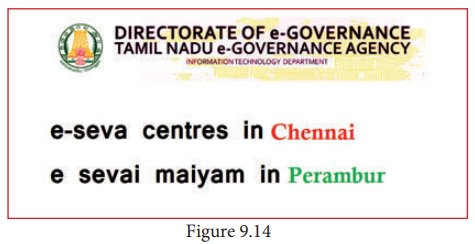Chapter: 11th Computer Applications : Chapter 9 : Introduction to Internet and Email
Web -Applications
Web
-Applications
E-commerce
is the activity of buying or selling of products on online services or over the
Internet. Electronic commerce draws on technologies such as mobile commerce,
electronic funds transfer, supply chain management, Internet marketing, online
transaction processing, electronic data interchange (EDI), inventory management
systems, and automated data collection systems.
E-commerce
Classifying
ecommerce according to the parties involved
1.
Business to consumer (B2C) – Transactions happen between
businesses and consumers. In B2C
ecommerce, businesses are the ones selling products or services to end-users
(i.e. consumers).
2.
Business to business (B2B) – As its name states, B2B ecommerce
pertains to transactions conducted
between two businesses. Any company whose customers are other businesses
operate on a B2B model.
3.
Consumer to business (C2B) – Consumer to business ecommerce
happens when a consumer sells or
contributes monetary value to a business. Many crowdsourcing campaigns fall
under C2B ecommerce.
4. Consumer to consumer
(C2C) – As you might have guessed, C2C ecommerce happens when something is bought and sold
between two consumers. C2C commonly takes place on online marketplaces such as
eBay, in which one individual sells a product or service to another.
5.
Government to business (G2B) – G2C transactions take place when a
company pays for government goods,
services, or fees online. Examples could be a business paying for taxes using
the Internet.
6.
Business to government (B2G) – When a government entity uses the
Internet to purchases goods or
services from a business, the transaction may fall under B2G ecommerce. Let’s
say a city or town hires a web design firm to update its website. This type of
deal may be considered a form of B2G.
7.
Consumer to government (G2C) – Consumers can also engage in B2C
ecommerce. People paying for traffic
tickets or paying for their car registration renewals online may fall under
this category.
E-governance
Electronic
governance or e-governance is the application of information and communication
technology (ICT) for delivering government services.
Benefits of E-governance
• Reduced corruption
• High transparency
• Increased convenience
• Reduction in overall cost.
• Expanded reach
of government

Types of Interactions in e-Governance
1. G2G (Government
to Government): When
the exchange of information and services is within the periphery of the government, is termed as G2G
interaction. This can be both horizontal, i.e. among various government
entities and vertical, i.e. between national, state and local government
entities and within different levels of the entity.
2. G2C (Government to Citizen): The interaction amidst the
government and general public is G2C
interaction. Here an interface is set up between government and citizens, which
enables citizens to get access to wide variety of public services. The citizens
has the freedom to share their views and grievances on government policies
anytime, anywhere.
3. G2B (Government to Business): In this case, the e-governance helps
the business class to interact with
the government seamlessly. It aims at eliminating red-tapism, saving time, cost
and establish transparency in the business environment, while interacting with
government.
4. G2E (Government to Employees): The government of any country is the
biggest employer and so it also
deals with employees on a regular basis, as other employers do. ICT helps in
making the interaction between government and employees fast and efficient,
along with raising their level of satisfaction by providing perquisites and
add-on benefits.
E-governance
has a great role to play, that improves and supports all tasks performed by the
government department andagencies, because it simplifies the task on the one
hand and increases the quality of work on the other.
Related Topics